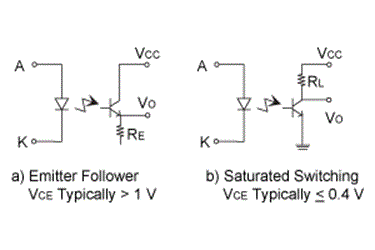High Gain Phototransistor Optocouplers For Space Applications

By Steve Ching and Manor Narayanan, Isolink, a subsidiary of Skyworks Solutions, Inc.
One of the first optocouplers used for high reliability applications was the simple phototransistor optocoupler. The basic devices were the 4N22, 23, 24 and the 4N47, 48, 49 series of hermetic phototransistor optocouplers in TO‐five type transistor cans made for military applications developed in the early 1970s. However, these devices were never designed specifically for space radiation environments.
Isolink’s involvement in the use of optocouplers for space applications came out of the work that was done in the military and medical use of optoelectronic devices in the late 1980s and early 1990s. In the military applications, most of the information on the radiation performance of various optoelectronic devices was initially obtained in the development of radiation-tolerant optoelectronic devices for radar, missiles, B1 and B2 bombers, M1A2 tanks, etc. The main types of radiation requirements were gamma total dose, dose rate, and neutron radiation. In the medical area, optoelectronic devices were developed for the control of high energy X-ray linear accelerators for cancer treatment. Based on this initial information, several types of LEDs and detectors were identified to be more radiation tolerant than others. For example, the amphoterically Si-doped 940nm GaAs liquid phase epi (LPE) LED cannot withstand displacement damage due to neutron particles or high energy X-rays. Other LED compositions such as double heterojunction (DH) AlGaAs LPE LEDs in various wavelengths (660nm, 700nm, 830nm, 870nm) are much more displacement damage tolerant.
Get unlimited access to:
Enter your credentials below to log in. Not yet a member of RF Globalnet? Subscribe today.
